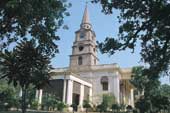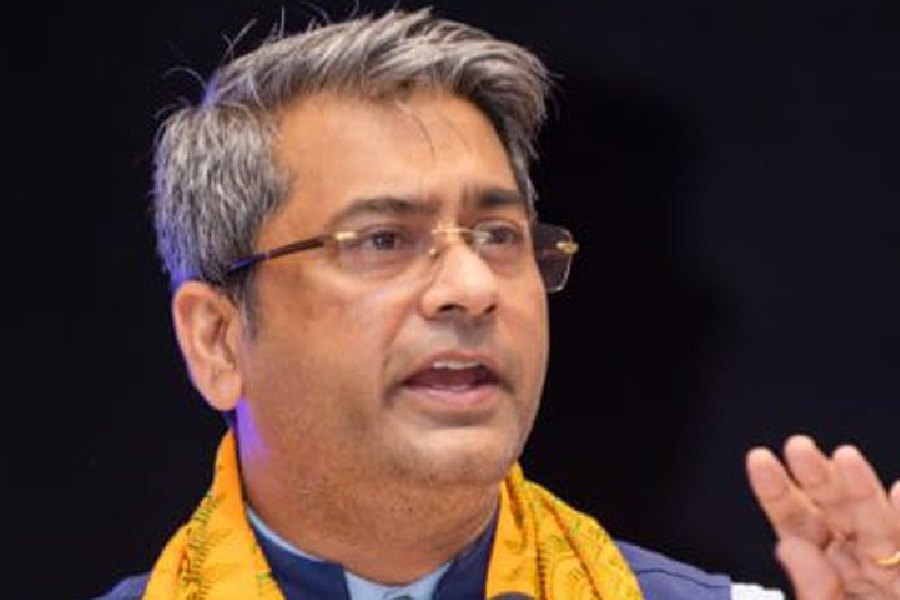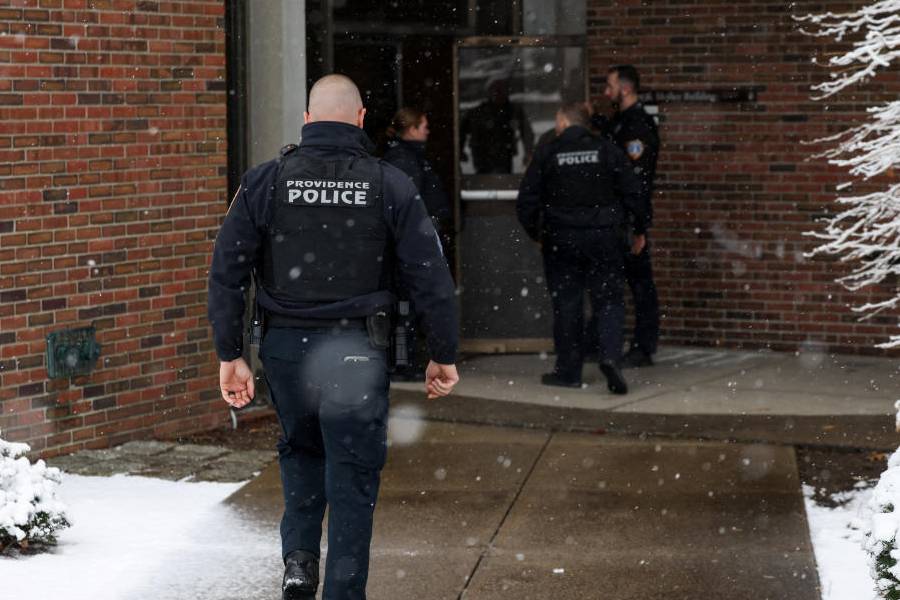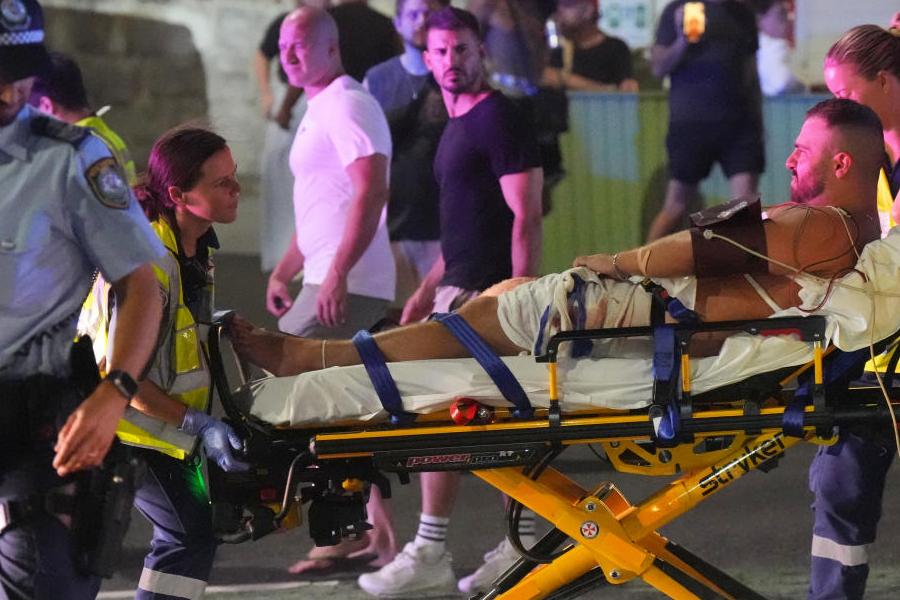 |
| St John’s Church and (below) Job Charnock’s mausoleum in the churchyard. Pictures by Bishwarup Dutta |
 |
This visit was sparked off by a wholly unrelated incident. Recently I was interviewing the Scottish author William Dalrymple, asking him if a book on Calcutta was in the offing. He narrated the most fascinating tale about his Calcutta connection:
“Seven generations of my family were born in Calcutta, there are three Dalrymples sitting inside St John’s graveyard. And a great-great-grandfather’s plaque is on the St John’s Church wall, James Pattle.
“James Pattle was known as the greatest liar in India. A man supposed to be so wicked that the Devil wouldn’t let him leave India after he died. Pattle left instructions that when he died, his body should be shipped back to Britain. So, after his demise (in 1845) they pickled the body in rum, as was the way of transporting bodies back then. The coffin was placed in the cabin of Pattle’s wife and the ship set sail from Garden Reach. In the middle of the night, the corpse broke through the coffin and sat up. The wife had a heart attack and died.
“Now both bodies had to be preserved in rum. But the casks reeked of alcohol and the sailors bored holes through the sides of the coffins and drank the rum… and, of course, got drunk and the ship hit a sandbank and the whole thing exploded, cremating Pattle and his wife in the middle of the Hooghly! That’s why you see a plaque on the wall and not a grave in the graveyard of my great-great-grandfather.”
I decided to go to St John’s Church and try to locate the plaque. I had heard of the church, but didn’t have a clue to its whereabouts. St John’s Church, it turned out, stands smack in the middle of Calcutta’s business district, a stone’s throw from Raj Bhavan. But once you enter the premises, you can feel the clock whirr back a hundred years and more, almost as if you are wearing Harry Potter’s time turner.
The church is a large square structure in the Greek architectural style. A stone spire 174ft tall is its most distinctive feature. The spire holds a giant clock, which is wound every day. Owing to its solid stone structure, the church was referred to as “pathure girja”.
Tall columns frame the church building on all sides and the entrance is through a stately portico. The floor is a rare hue of blue-grey marble. History books say much of the stone was brought from Gour, the ancient capital of Bengal. As I entered the church, the din of traffic and everyday noises faded. Sunlight streamed in from large windows, muted by the coloured glass. The main altar is of a simple design. Behind the altar is a semi-circular dome and the floor is of dark blue, almost black, stone.
To the left of the altar hangs a painting of The Last Supper by the British artist of German origin, Johann Zoffany. Legend has it that when the painting was unveiled, Calcutta “high society” was shocked to see the faces of many of its members in the portraits of Jesus, St John and the other apostles.
Some say James Paul, the English Resident at the Royal Court of Oudh who modelled for the portrait of Judas, committed suicide a few years later, much like the Biblical traitor.
In the painting, a figure rests on Jesus’s right shoulder; it looks more like a woman than a man with long hair. Did Zoffany believe Mary Magdalene was one of the apostles? Dan Brown would be pleased as punch if he came to Calcutta!
The walls of the church contain memorial tablets, statues and plaques, mostly of British army officers and civil servants. Two female figures sitting on a beehive and a lone woman with an urn are particularly beautiful. High up on the right wall, I came upon the plaque dedicated to James Pattle and his wife Adeline. I learnt that Pattle was in the Bengal Civil Service and died on September 4, 1845, aged 69. His wife died at sea on November 11, aged 52.
Suddenly, music wafted in from near the altar. One of the organ players was tuning the keys before the Sunday service. Time and I stood still… mesmerised by the melody and the mood.
To the left of the altar is the pipe organ, a room-like monstrous device capable of belting out the sweetest songs. It is played on Sundays between 8am and 9am and an early morning visit would be well worth your while.
To the right is a smaller altar called Lady Chapel, whose entrance is guarded by two winged angels. Beyond is a three-fold stained glass window depicting scenes from the life of Christ in vibrant colours.
In the veranda outside is a white marble monument inlaid with beautiful mosaic, dedicated to Lady Canning (after whom is named the syrupy ladikeni). Sadly, time and neglect have discoloured this fine piece of architecture.
A stroll through the churchyard is like a history lesson, minus the yawns. On one end of the grounds stands an octagonal structure with an obelisk on top, erected by Lord Curzon in memory of the 123 who are said to have perished in the Black Hole prison in old Fort William on June 20, 1756, after Siraj-ud-Daula’s siege of Calcutta. Further ahead is the mausoleum of Job Charnock, the supposed founder of our city. It is a massive octagonal structure with a serrated parapet and a dome on top, erected, surprisingly, by his son-in-law Sir Charles Eyre in the 1690s.
Nearby is a monument dedicated to Mrs Francis Johnson (1725-1812), the oldest British resident of Bengal, better known as Begum Johnson. The epitaph says she saw four husbands to their graves. As I stood transported to the life and times of Mrs Johnson, a car honked suddenly, jolting me back to the present. The monument is at the far end of the churchyard and overlooks a busy street. I gathered my thoughts and headed back, thanking a Scottish author for prodding me into rediscovering my city and its treasures.
fact file
• St John’s Church was designed by Lieutenant James Agg of Bengal Engineers on land donated by Maharaja Nabkissen Bahadar of the Sovabazar royal family. Construction started in 1784 with Rs 30,000 raised through a public lottery.
• The structure was modelled on London’s St Martin’s-in-the-Fields, as were most English churches in the sub-continent in the British era, but the spire had to be shortened because the soil couldn’t carry the weight of the original plan.
• The church was consecrated in 1787 and served as the Anglican Cathedral of Calcutta until 1847, when St Paul’s Cathedral was consecrated.
• The churchyard was the only European burial ground till 1767.
• The church was used for baptisms and weddings of the who’s who of Bengal’s British folk at one time. In 1798, merchant and Calcutta Sheriff William Fairlie — from whom Fairlie Place got its name — married Miss Margaret Ogilvie here.
Tourist Tips
How to reach: The address is 2/1 Council House Street. The church gate is at the corner of Council House Street and Hastings Street, a few metres from Raj Bhavan. It is one of the rare places in the city where parking is not a problem.
Nearest Metro station: Central/Esplanade
Contact: 2243-6098, Weekdays: 10am to 5pm, Saturday: 10am to 2pm.
Church timings: 8am to 5pm.
Sunday service: 8am to 9am











